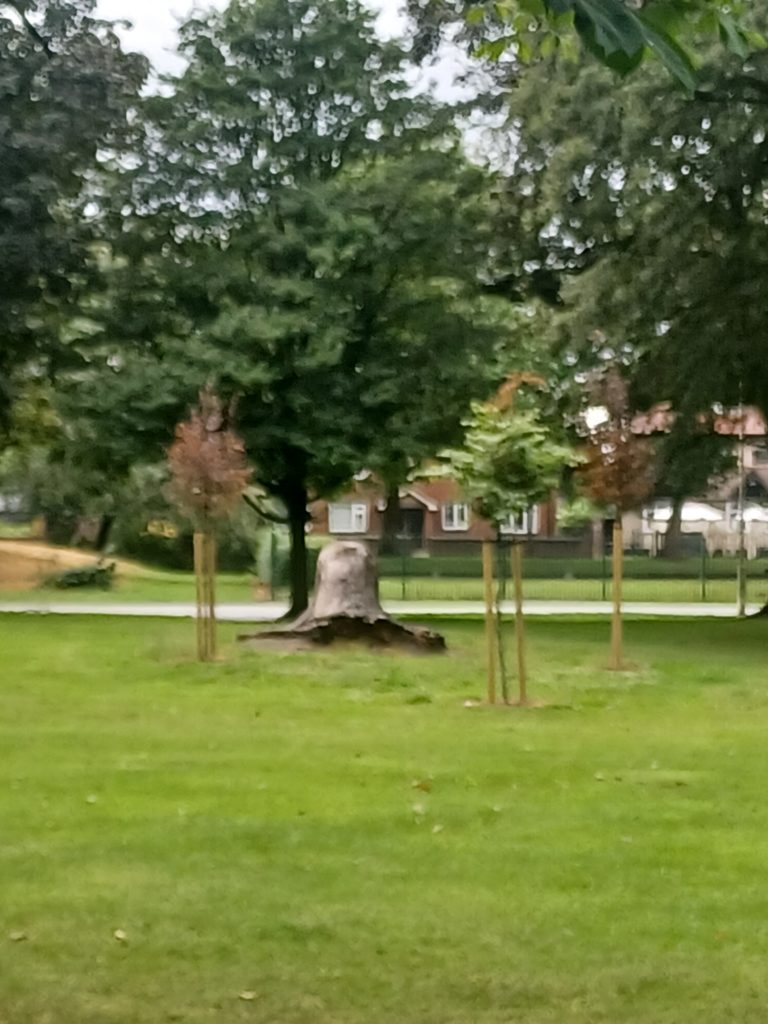I’m sure that the recent Agriculture Act links in to the recognised pressing demand for the planting of many more trees. Trees absorb carbon dioxide and emit oxygen and can therefore play a significant role in reducing climate change. Globally trees are still being felled at an alarming rate where a demand exists for the timber, not only in the tropics but also closer to home. How can it be rational for ships loaded with thousands of tons of woodchip from timber felled in the southern states of the U.S.A. to cross the Atlantic, unload in King George Dock and the cargo then entrained to Drax power station; the wood being burnt to generate steam to drive the electricity generators?

When policy makers say ‘Plant more trees’ that is only half the story and oversimplistic. The photo above (taken using phone not camera) shows three young trees planted in West Park, Hull. These three beech trees are probably about six years old and were bought as sturdy healthy three or four year old trees. Because they were planted in open grassland in a municipal park they did not need any special planting system such as would have been the case in a hard surface location. Furthermore, they are supported by two posts each with a flexible rubber brace keeping the young tree stable. This is a reasonably good support system, the best being to encase the young tree trunk in a circular metal mesh tree guard, the problem here being simply one of cost. Without any guards or support systems the planting of these quite expensive young trees would have been all but a waste of time and money. At the other end of the scale tree planting schemes often are nothing more than the planting of ‘whips’, these being flimsy one or two year old rooted twigs which can be uprooted in a second by any person inclined to do so. I have seen a small plantation of over 200 whips maliciously uprooted over two evenings. Planting whips in plastic tubes can help but they are just as vulnerable. The planting of whips in gaps along existing hedgerows can be more productive but wherever planted whips need at least three undisturbed years to develop a root-ball that really grips the soil.
So what age trees and where are they being are crucial questions to be answered if a tree planting programme is being discussed or heralded.